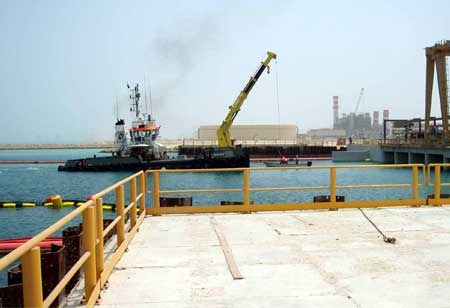Thank you for Subscribing to Construction Business Review Weekly Brief

Constructing A Port: Factors That Influence Its Feasibility
To confirm that the harbor is sheltered, it may be essential to build numerous breakwaters, and some harbors are built out into the sea.
Before constructing a harbor, some factors will be important to study while research is being conducted.
They are:
The major objective of the harbor: It's essential to know the main objective of the harbor and the type and size of vessel that will utilize the harbor. Once its objective and the type of ships foreseen to call have been established, the type of facilities within the harbor can be developed.
• The sustainability of the anticipated cargo volumes: Since the construction of a harbor incorporates such a large expense, a steady cargo flow must be ensured for a long period. If only a small amount of cargo will move via the harbor, it might not be practical to go to the cost of building it.
• A sheltered site for the harbor: As ships must work cargo in calm conditions, harbors must be constructed to provide as much shelter as feasible from the swell. Although it is hard to shelter ships from wind, the alignment of berths might be essential to lower the impact of the prevailing wind on ships bedded in the harbor and cargo processes.
To confirm that the harbor is sheltered, it may be essential to build numerous breakwaters, and some harbors are built out into the sea. They are called Artificial harbors.
Some harbors are constructed in a sheltered bay, lagoon, or river mouth, and while brief breakwaters might be essential, the cargo wharves are built within the sheltered water area. These are called Natural harbors.
• Size of the area to be made for the harbor: This counts on the type and volume of cargo to be managed and the ship expected to call at the harbor. Mineral cargoes generally require large areas to keep the mineral before loading (this area is named the mineral stockpile); container terminals are also commonly large, although those harbors driving a smaller volume of containers will be smaller. If large ships are anticipated to call, there must be adequate water area to turn these large ships. There should also be space for future development, and the initial harbor plans often include many possible expansion phases for the harbor.
• Depth of water: This also counts on the size of the ship anticipated to call. Deep-draughted ships need a proper water depth, but the water depth may not be as significant if just small fishing vessels call.
• Flat land: Large areas of flat land surrounding the harbor are required to store cargo and for rail or road networks.
• Services (water, electricity): Large amounts of electricity are required for cargo management equipment. All offices need electricity for their electronic systems. Fresh water is also important as ships usually need tons of fresh water.
• Labor: A harbor needs workers of all levels of skills – from more qualified engineers to supervise complicated cargo loading machinery, building and harbor maintenance, and electronics systems to lesser skilled people. More qualified and experienced seafarers are also necessary as harbor masters, pilots, tug engineers, and other roles that deal straightly with the ships.
• Transport access: To shift cargo to and from the harbor, adequate road and rail links are important. Railway yards where trains are mobilized to carry the cargo to its destination are also required, either at or close to the harbor. Many people utilize the harbor and also need transport facilities close by.
• Finance: To build, operating, and manage a harbor costs a greater amount of money. In some countries, the state operates all harbors; thus, the state will fund or subsidize harbor construction. Due to the high costs of harbor construction, cautious planning is required to confirm that the construction project will be financially valuable, i.e., that the earnings from the harbor will pay back its construction expenses within a suitable time and that earnings will cover operating expenses.
• Ancillary Services: A harbor requires several ancillary services, comprising pilotage, tug services, bunkering services, chandling services, waste disposal services, ship restoration, engineering services, and others. The scale of these services counts on the size of operations in the harbor. A small fishing harbor will need all these services (except pilotage and tug services) but on a smaller scale than a harbor, where a broad range of services expands to operations like major ship repair and bunkering facilities.








